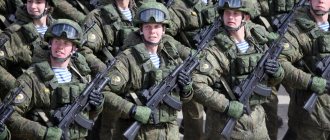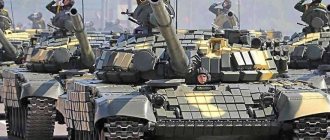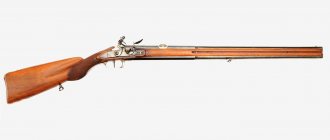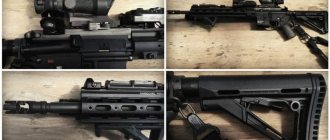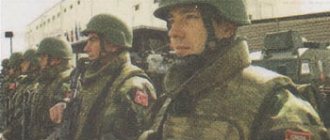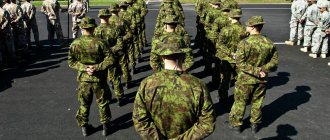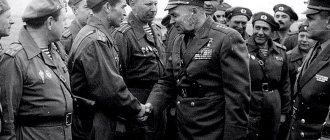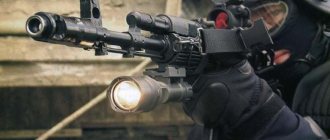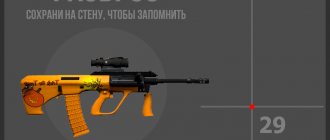History of weapons: Captain Minier's bullet
We talk about an invention that played a significant role in the Crimean War and the American Civil War
The Minié bullet, which significantly revolutionized infantry tactics in the mid-19th century, was the fruit of the joint work of French army captain Claude-Etienne Minier and gunsmith Henri-Gustave Devigne. In 1847, Minier improved the Devigne cylindrical-conical bullet, created for firing from muzzle-loading rifles. The improvement at first glance was quite simple and consisted of adding a conical recess to the rear of the bullet, into which a metal cap was inserted. However, it made it possible to achieve very noticeable results. Earlier bullets, spherical or cylindrical-conical, were driven through the barrel with considerable force when loaded, deforming in the rifling. As the barrel became contaminated with soot from black powder and lead from bullets, loading became difficult after a couple of dozen shots and the rifle barrel required cleaning. When a Minié bullet was fired, the powder gases “inflated” its rear hollow part, pressing the “skirt” into the rifling. Thus, the bullet could have a slightly smaller diameter than the bore along the bottom of the rifling. This meant easier and faster loading and less lead in the barrel. In addition, the bullet “skirt” that cut into the rifling improved the obturation, reducing the breakthrough of powder gases forward along the bottom of the rifling and thereby improving the efficiency of combustion of the powder charge.
France adopted a rifle for Minié bullets in 1851, and two years later the British adopted a similar system. In 1861, Minié bullets were adopted by the US Army along with the Springfield M1861 muzzle-loading cap rifle.
Minié rifle
The most famous conflicts in which Minié bullets were actively used were the Crimean War of 1853-56 and the American Civil War. In Crimea, the Russian army suffered a lot from the much more accurate and long-range rifles of the French and British. The smoothbore guns of the Russian army had a firing range of up to 300 steps, while rifled guns with Minié bullets fired at a thousand steps. Enemy British and French troops had the opportunity to hit the Russians already during their approach to the battlefield, inflicting defeats even on distant reserves. All the field battles of the Crimean campaign at Alma, Inkerman and Chernaya Rechka were unsuccessful for Russian weapons, and only the sad experience of this campaign finally pushed the Russian army to quickly rearm with new weapon systems with a rifled barrel.
P1853 Enfield
Depending on the country and period, the Minié system bullets had slightly different characteristics. For example, the British P1853 Enfield rifles used during the Crimean campaign had a caliber of 0.577 inches (15 mm). The bullet weighed about 34 grams and, with a charge of 4.5 grams of black powder, accelerated to 270 m/s. Due to the fact that cylindrical-conical bullets maintained their trajectory speed much better than spherical bullets fired from smooth-bore muskets, the wounds inflicted by Minié bullets were usually more severe.
GUNS BULLETS OF THE CRIMINAL WAR 1854–55.
Captions for the bullets (according to souvenir dealers on the territory of the Sevastopol Defense Panorama):
Spherical bullet for percussion and flintlock rifles (Russia).
Neissler bullet for an infantry percussion smoothbore rifle model 1842 (France-Russia).
Bullet for the Model 1853 Enfield infantry percussion rifle and the Model 1853 artillery carbine (Great Britain).
Minie bullet for the Minie infantry rifle rifle model 1851 (Great Britain).
Tamizier bullet 1846 for Thouvenin carbine 1846 (France).
Bullet patterns and sizes in millimeters:
Review of the evolution of small arms until the mid-19th century
Around the middle of the 13th century, black powder became known in Europe and already at the beginning of the 14th century firearms appeared. For the first two hundred years, the main design changes had one goal - to improve the way the charge was ignited. By the end of the 15th century. All possibilities for improving handguns on the basis of such limited prerequisites as the barrel and the smoldering wick turned out to be exhausted. At the end of the 15th century. Kolestsovy appears, and at the beginning of the 16th century. - percussion flintlock.
Smoothbore flintlock guns of the simplest design have firmly and permanently established themselves in the arsenal of the armies of different countries. They remained in the army almost without any changes for three hundred years. During this period, their improvement was carried out mainly by improving the quality of workmanship, but not the design. The design of flint weapons was so simple that it was adopted throughout the world without any changes or variations.
There was a huge discrepancy regarding calibers. So, one regiment could have up to 40 different calibers of guns. Although the issue of ammunition supply with such diversity was resolved quite simply - the soldiers themselves cast bullets in accordance with the calibers of their guns - nevertheless, such diversity caused a lot of inconvenience. Parts that had the same purpose on different types of guns were different, and there could be no question of their interchangeability.
At the end of the first half of the 19th century, advances in the field of chemistry and the general development of technology opened up wide opportunities for the further development of small arms. The first innovation was the use of percussion capsules. Experiments on the use of percussion compounds were carried out independently in different countries, and eventually they led to the widespread introduction of copper primers.
Another important innovation was the free delivery of the bullet when loading a rifled gun. Only with the advent of this invention was it possible to widely use rifling in infantry weapons.
Helical rifling, which significantly increases the firing range and improves accuracy, was invented at the turn of the 15th–16th centuries. Rifled guns of that era fired a spherical bullet almost the same diameter as the barrel. When loading, the bullet was wrapped in a “plaster” and driven into the barrel with a ramrod, which was hit with a hammer. Too slow loading was the reason that this weapon was not widespread among the troops.
The wars of the first two decades of the 19th century made the importance of targeted shooting obvious, but in order to make rifled weapons widespread, it was necessary to combine the accuracy of a rifled weapon and the rate of fire of a smooth-bore weapon in one muzzle-loading weapon. When loading, the bullet had to pass freely along the barrel, and when fired, it had to fill the rifling. The search was carried out empirically, but the industrial revolution accelerated the implementation of new products. The French rifle school in Vincennes played a major role here.
In 1826, officer A. Delvigne made a barrel chamber with a smaller internal diameter than the bore: resting against the edges of the chamber, the bullet rang out to the sides due to the blows of the ramrod. But with such “dispatching” it became too deformed, and Delvigne was unable to achieve stable combat from his fitting. Its fittings, adopted by the armies of Austria and Sardinia, did not last long. However, in the course of his work, Delvigne created a cylindrical-conical oblong bullet and was the first to practically prove its benefits, which Professor I. Leitman had theoretically substantiated a century before.
The oblong bullet provided a number of advantages in internal and external ballistics. She followed the grooves more correctly, filling them better and without breaking; a large lateral load (ratio of mass to cross-sectional area) and an advantageous shape in terms of aerodynamics reduced speed losses in the air; its flight trajectory became flatter, the target range and the direct shot distance increased.
An officer of the Vincennes school, Colonel L. Thouvenin, placed a rod on the tail rotor of the barrel - the bullet, sitting on the rod, expanded with the blow of a ramrod. This solution was ingenious, but the rod was bent, and it was impossible to clean the chamber without completely disassembling the weapon. Nevertheless, Thouvenin's 1842 rifle of 17.78 mm caliber hit up to 1400 steps, and at 1200 steps its bullet pierced two boards 3 cm thick.
The problem of free delivery of a bullet when loading a rifled gun was perfectly solved with the advent of elongated self-expanding bullets. A free-flying and self-expanding bullet when fired, created in 1848 at the same Vincennes school by Captain C. Mignet, had a conical recess at the back, closed with a light iron cap. The bullet was inserted into the barrel freely, and during the shot it rang out and ran tightly along the rifling. The increase in bullet diameter occurred as a result of powder gases pressing a kind of wedge - an iron cap - into its conical recess. The idea of using such bullets was picked up in different countries. Tests of elongated pointed bullets were carried out everywhere and various improvements were made to their design. Simpler expansion bullets were also used - with recesses of various shapes, but without cups.
Note that the effect of self-expansion of a bullet was successfully used for smooth-bore guns. The expanding bullet significantly improved obturation (ensuring the tightness of the barrel bore when fired), that is, it reduced the useless leakage of powder gases breaking between the bullet and the barrel, and thereby significantly increased the firing range.
During the Crimean War, near Sevastopol, a French soldier was found with a pack of cartridges with “secret” bullets from the system of the head of the Vincennes rifle school, Colonel Neissler. Such bullets were tested in Sevastopol and St. Petersburg. In 1855, the Neissler bullet was adopted by the Russian army. The firing range of the 1852 model gun increased from 300 to 600 steps. This was the latest improvement in the soldier's smoothbore rifle. Then the era of the rifle began.
The Crimean War was a clash between rifled and smooth-bore infantry weapons, which were muzzle-loading, mostly capsule-fired, approximately equal in rate of fire, the difference was in the effective range. At the beginning of the war, the share of rifled guns in the small arms of the Russian army in Crimea did not exceed 4–5%, by the end of the war - 13.4%. In the French, rifled guns made up about a third of small arms, and in the English - more than half. The French had a Thouvenin rod fitting with an aiming range of 1100 m, the British had an Enfield rifle with a Minie bullet and an aiming range of up to 1000 yards (914 m). Their aimed fire covered the range of Russian rifles (four times) and smooth-bore guns, which allowed the enemy to hit not only the forward chains, but also artillery and convoys, while being completely safe.
Add-ons
Bullets of the Crimean War. At the bottom right, for scale, the Klashnikov assault rifle bullet is 5.45.
Armed forces of Spain. Minié rifles, single-shot, repeating and self-loading (Gran España)
Home » Alternative History » Alternative History - options for forks » Armed forces of Spain. Minié rifles, single-shot, repeating and self-loading (Gran España)
Alternative History - options for forksSmall weapons of the past, present and future
arturpraetor 04/14/2018 1090
0
to Favoritesin Favoritesfrom Favorites 1
Good day, dear colleagues. I continue to publish my findings on Spanish firearms in the tangible alternative time (from the mid-19th century to the present), and today we will talk about rifles. Muzzle-loading, single-shot, magazine and self-loading rifles, as well as sniper magazine and self-loading samples will be considered. This time without introductions.
Fusiles (rifles) [1]
Toledo 36/50 - the history of the first mass-produced rifled rifle in Spain began back in 1835, when the Spanish Ministry of War decided to re-equip the army with new types of firearms with maximum unification of components, reduction in cost and the maximum possible use of machine production. A year later, the Toledo 36 capsule gun was adopted for service (i.e., developed by the Royal Arms Factory in Toledo, adopted for service in 1836), and with it the Toledo 36C carbine. The walls of this gun were deliberately made thicker than necessary, so that, if necessary, they could easily be turned into rifles. However, the shortcomings of the machine tools of that time did not allow this feature to be fully realized, and only in the 1840s was it possible to create a sufficiently powerful production base, after which a third of the guns produced began to receive rifling. Finally, in 1850, in Spain, it was decided to cut all the guns produced, as a result of which the Toledo 36/50 rifle and the Toledo 36/50C carbine, designed for the use of Minié bullets, were born. Spain was one of the first to widely introduce new weapons and was one of the first to completely re-equip its army with rifled rifles. In addition to the FAE itself, the “Toledo guns” were in service with many countries around the world, mainly in Latin America. Rifles were also actively supplied to the Confederate States of America during the American Civil War. In the mid-1860s, these rifles underwent a modernization program modeled on the French "snuff rifles" with a hinged cartridge lock mounted in the breech. The resulting Toledo 356 rifles ( 3 6, 5 0, 6 6 years) showed poor performance; in total, just over one and a half thousand rifles were converted, after which the program was abandoned. Since 1869, the Toledo guns were gradually replaced by new breech-loading rifles, and eventually disappeared from the armed forces. A number of these rifles have survived to this day in the form of museum or exotic hunting weapons. In addition, replicas of “Toledo guns” are extremely popular among historical reenactors.
Moreno 69 - the first full-fledged breech-loading rifle in Spain, was produced in two versions (infantry and carbine). Initially it was planned to use unitary 9 mm cartridges, but the army advocated a larger 10.75 mm caliber. For the first time, a welted metal cartridge with central ignition, black powder and an elongated jacketless bullet was used for small arms, which made it possible to develop a fairly high rate of fire with good accuracy. In general, the rifle has established itself as a simple and reliable weapon, was actively exported to Latin American countries and managed to take part in many conflicts, from coups to major wars like the Spanish-American one. Remained in service until the early 1920s, primarily as a reserve or training weapon. A large number of these rifles were sold from Spanish warehouses to Russia at the beginning of the First World War, where, after minimal modification, they could fire the standard Berdan cartridge.
Rubio M1890 is the main repeating rifle in Spain at the end of the 19th and first half of the 20th centuries, the first single rifle. The history of this rifle began in 1872, when a group of engineers from the Trubia plant, led by Lieutenant Fernando Rubio Bahamonde, became familiar with the Swiss Vetterli repeating rifle. With the approval of the Minister of War, the development of a domestic analogue began, which, however, was not a priority and dragged on for 18 years. 8 variants were tested for different cartridges and different systems, which for various reasons were not adopted for service. As a result, by 1889, when a competition was announced in Spain for the development of a repeating rifle for smokeless powder and a reduced caliber, Rubio’s group proposed the best project, which was almost immediately adopted. The Rubio Modelo 1890 rifle turned out to be quite simple to manufacture, easy to use, accurate and reliable. Contrary to the established practice with the production of two types of rifles (infantry and carbine), one “intermediate” one was adopted, with a barrel length longer than that of a carbine, but shorter than that of an infantry rifle. Also, the rifle in its final version was one of the first in the world to use a reduced caliber cartridge (7.5x57 mm). It was actively exported abroad and was adopted as the main weapon in Latin American countries. Since the late 1930s it has gradually fallen out of use, but it was destined to completely disappear from the Spanish armed forces only at the end of the 1960s. Produced in small series by STAR (ASTAR) to this day as a civilian and ceremonial weapon.
The Rubio M1890 Largo is a special Tidor [2] rifle developed after the Spanish-American War specifically to equip the best marksmen in infantry units. Later it also began to be used as a sniper, for which an optical sight was mounted on it. It was produced in relatively small batches, with special attention to the finishing of the barrel.
LGC F50 is a development of the M1890, the first specially designed sniper [3] rifle in Spain, which was reflected in the complete absence of any sighting devices other than optics and the presence of a muzzle brake. Created by Llama, Gabilondo y Cía SA. Unlike the prototype, it had a detachable box magazine, although it could be reloaded manually, one cartridge at a time. Actively exported abroad.
LGC F69 is a modernized version of the LGC F50 rifle, replacing wooden parts with plastic ones, changing the shape of the muzzle brake and increasing the magazine volume. It was actively used by the armies of many countries around the world; in addition, it was also extremely popular as a hunting weapon (single-shot civilian version of the LGC Cazador 900) in a number of countries around the world.
LGC F98 is a high-precision repeating sniper rifle. It was developed taking into account progress in precision metal processing and materials science. Initially it was planned for use only in the Spanish army, but was actively included in the special forces. divisions and for export. Initially it had a number of shortcomings, which were gradually corrected with the participation of the manufacturer.
Fusiles semiautomatica (self-loading rifles)
The Mondragon 1908, the first self-loading rifle adopted in Spain, was developed by the Royal Arms Factory in Toledo in collaboration with the Mexican military officer and inventor Manuel Mondragon. It was the result of a long development of a mechanism for removing powder gases, patented in the 1880s. Intended for arming cazador units [4] and guards units. It was modernized several times during production due to initial design flaws and high cost, which limited the possibilities of its use. In addition to the high cost and complexity of the design, a serious drawback of the rifle was its sensitivity to contamination, which became especially evident during the First World War. However, with proper care, the rifle remained a dangerous and quite popular weapon until it was replaced by a newer type of self-loading infantry weapon.
Diaz M1935 is a deep modernization of the Mondragon M1908 rifle, carried out by STAR engineer Pedro Diaz. It was carried out with the aim of improving the characteristics of the original sample, simplifying its production and at the same time increasing its reliability. The first model of the rifle was ready in 1932, but its final development took another three years. As a result, the rifle turned out to be quite close in design to the American M1 Garand, although it differed in appearance, ammunition supply and some other features. According to the plans of the War Department, it was supposed to completely replace the Rubio rifle in the army as the main infantry weapon, but the complete rearmament was delayed and was completed only towards the end of World War II. Priority in rearmament was given to units of cadadors, tiradors and marines. It has not been officially withdrawn from service and is still in storage and in limited use.
LGC F54 is the first self-loading tidor rifle officially adopted for service. Thanks to the unification of many components with the Diaz rifle, it quickly went into production. The army model was devoid of any sighting devices other than optics, but there was also a carbine with an open sight, which for some time was in service with the internal troops of Latin American countries.
LGC F72 is a self-loading tidor rifle, created on the basis of the REFATO FA53 assault rifle [5] . It had good characteristics of reliability and accuracy, and due to its unification with the main assault rifle, it was quite cheap to manufacture and maintain. Despite the presence of a more modern F95 rifle, it still remains in service in certain parts of Spain.
LGC FGC (Fusil de Gran Caliber) is a large-caliber sniper rifle developed by LGC together with the Italian Beretta. It was considered by the Spanish army as a rifle for destroying enemy light equipment in low-intensity conflicts. At first it had a number of shortcomings, which were corrected through modernization during production. Actively exported. It is also available in versions chambered for 12.7×99 mm NATO and 12.7×108 mm DShK cartridges.
LGC F95 is a modernization of the Tidor F72 rifle using modern technologies and alloys. It is actively exported to Latin American countries; in addition to the army, it is also in service with special forces. units and Civil Guard [6].
Notes
1) Despite the fact that in Spanish a rifle will be rifle (“rifle”), small arms as a sign of continuity in Spain are still called fusil, i.e. guns. Modern machine guns are thus literally called “assault rifles” (fusiles de asalto).
2) Tiradors (at the beginning of the 19th century hostigadores, later tiradores, or tiradores designado) - riflemen, a type of light infantry operating directly from the ranks of the line infantry. In Russia they are called army (infantry) snipers, in the USA - Marksman. More details can be found in a separate article about the organization of the Spanish army, which I will write someday.
3) In Spanish, snipers are called francotiradores.
4) Cazadores - light infantry operating in large independent formations, an analogue of chasseurs, chasseurs, voltigeurs, tirailleurs, bersagliers, etc.
5) Real SETME rifle.
6) Analogue of the Internal Troops of the Ministry of Internal Affairs.
Story
The fitting was an extremely accurate weapon [Note. 1] for its time, but in a combat situation it was difficult to fire more than one shot: the bullet was driven into the barrel with a hammer. As a result, only individual soldiers were equipped with guns that had a low rate of fire, which was an analogue of a modern infantry sniper - English. designated marksman
). It was necessary to resolve the contradiction: the bullet should be easy to load and at the same time fit firmly into the rifling.
In 1848, French officers Montgomery and Delvigne proposed improved bullets that would speed up the loading of the rifle. A bullet that expands when fired was invented by Captain Delvigne in 1826[1].
In 1832, British officer Captain John Norton invented a cylindrical-conical bullet operating on the same principle, but it was not widely used[2].
In 1849, Claude Minier proposed his version of an expansion bullet. It is this version of the expansion bullet that has become widespread.
Bullets of the 19th century: only ideas
As is well known, the main component in a small arms is the cartridge. This opinion is shared by many gunsmiths, and it is not without reason that very often, before designing a new weapon, a cartridge is created for it, and a bullet is created for the cartridge. Note that with the simplest ball bullets made of lead, copper and even silver, people successfully killed each other for more than 300 years, before in 1832 the English captain John Norton proposed a cylindrical-conical bullet with a depression in the bottom.
Minie bullet on the left and compression bullets on the right.
In 1849, Claude Minier proposed a lead bullet with an iron cup, which was well pressed into the rifling of the barrel, and became very popular. However, it later turned out that it was possible to do without a cup, since the powder gases themselves “expand” the bullet well when fired. And then the bullet was simplified even more, turning it into a simple pointed cylinder (“compression bullet”), at least 2 calibers long, which, as it turned out, even without any indentations when fired, is compressed and fills the rifling well.
Minie bullet, American version without a cup.
However, the idea of a bullet with a depression in the bottom is by no means dead. In 1848, Walter Hunt, a New York inventor, received a patent for a repeating rifle with a tubular magazine that was operated by two levers. It fired caseless cartridges, in which the powder charge was contained inside a bullet that had a cavity inside. Hunt's design was unworkable, and it was improved in the famous (and already much more efficient) Vulcanic pistol, the 10-mm lead bullets of which had a recess in the bottom with a charge of mercury fulminate. But neither a pistol of this design nor a rifle found great success.
Pistol "Vulcanic".
However, the idea of a caseless cartridge with a charge in the bullet itself is by no means dead and is being revived again every now and then. It turned out, however, that despite its considerable length it has poor ballistic characteristics. That is, the simplest and most obvious way - to place the propellant charge in the bullet itself - turned out to be a dead end.
The caseless cartridge that causes the most complaints.
But experts are not too pleased with the design of the German cartridge with a bullet inside a block of pressed gunpowder. After all, it is obvious that the metal protective jacket of the cartridge case was invented precisely in order to preserve its contents from climatic, mechanical, and temperature influences when, for example, a cartridge falls into a chamber that is hot from continuous firing. That is, a “powder jacket” for a bullet is also not an option! Then what?
Caseless German cartridge of 4.7×33 mm caliber in disassembled form. The bullet is completely immersed in the powder charge and sealed with a white plastic stopper.
The solution, even if only partial and quite “narrow”, may lie on a slightly different plane, namely the plane of synthesis of a number of shortcomings and very specific advantages of the latest developments in this area. What exactly are we talking about? Here's what: it is known that the Italian designers of the CompBullet company have found a way to increase the accuracy and accuracy of fire and at the same time reduce the recoil of weapons due to the original design of bullets with “ventilation” channels in the body.
And they did the following: they drilled one channel along the axial line from the base, in addition to it several lateral ones, going to the sides from the axial one. According to the creators of this bullet, this gives a number of positive effects. First: when fired, part of the hot gases moves along the axial channel and diverges along the side ones. At the same time, they break out to the sides and create a gas layer between the bullet and the barrel, which reduces the friction force of the bullet on the barrel bore.
Bullet with axial compensator, caliber 9 mm. Photos from the CompBullet website.
After the bullet leaves the barrel, the remaining hot gases continue to move inside the holes for some time, and the bullet begins to work as a muzzle brake, compensating for recoil and stabilizing its position. Therefore, these bullets are called “compensatory bullets”. Then the gases, escaping from the holes during the flight, create, albeit small, but still a reactive effect that increases the speed of the bullet.
According to the company, this design reduces the visibility of the flash when fired and reduces the volume of fire. There is one more effect from such bullets: their weight is less than usual, which makes it possible to increase their ammunition capacity. Of course, many effects appear in it “slightly” and “barely”, but, nevertheless, they appear, which makes such bullets still at least a little better than ordinary ones. Bullets are produced in different calibers and types - 9 mm; .45 Winchester Magnum; .308 Winchester 7.62 mm, etc.
Bullet with axial compensator, caliber .308 Winchester 7.62 mm. Photos from the CompBullet website.
Well, now let's see what these innovations can give if they are combined with a number of new proposals based on the principle “everything new is well forgotten old.” First, take a close look at Figure 1.
Rice. 1. Flat caseless bullet with a flywheel-gyro inside.
On it you see a flat bullet in the form of a bar with a sharpened tip, that is, in essence, a “flying blade”. It is clear that such a bullet will have exceptional destructive power, and it is also very convenient for use in weapons. A flat bore, and even without rifling, is much easier to make than a round one; it can be stamped, and the barrel can be disassembled into two parts, that is, it is also easy to clean. The caliber is unusual, double: 20 or 30 mm wide with a thickness of 4.5 mm. A flat magazine designed to hold 30 9mm rounds will hold 60 of these rounds! That is, this is ammunition for submachine guns and... only! In a pistol they will not be very convenient due to the thickness of the handle, and for a machine gun they are not suitable due to the need for accurate shooting at 500-600 m, which such a bullet most likely will not provide. But at short distances, at which the submachine gun fires, this indicator (at least in theory!) should be quite satisfactory. Due to... the flywheel located in the pool!
Let's look again. The bullet in Figure 1 is caseless, that is, its walls shield the powder charge from the hot walls of the chamber. However, it can also have a sleeve; there is no difference in its action, it’s just that the latter option is more traditional. In both versions, the bullet consists of two stamped halves and a flywheel with blades located inside between them, like a turbine. They are connected by spot welding, a warhead with two burning primers is placed inside and that’s it!
And then, when the shot is fired, the fun begins. The pressure of the gases presses the bullet tightly into the channel and causes it to start moving. At the same time, hot gases enter the left and right channels, which have holes on the sides. While the bullet is in the barrel it acts as a “gas lubricant” (at least that’s what the Italians say!), but as soon as the bullet protrudes from the barrel and the holes open, gases begin to flow out of them. The amount of movement is the same on the left and on the right. But through the right channel, gases flow freely, but on the left, their flow washes the flywheel wheel and causes it to rotate at enormous speed. The gyroscope effect is triggered, and since it spins in a horizontal plane, the plane of the barrel, the bullet flies in the same plane. How far? This is hardly impossible to theoretically calculate, but... for a submachine gun, nevertheless, it should be quite enough! Of course, for the state to have ammunition only for a submachine gun is clearly overkill. But if we, like in the West, had many small arms firms and private security companies, then... who knows if this design would be useful to them? After all, almost any submachine gun can be converted to use such ammunition. It is enough to install a new barrel, magazine, bolt and a new receiver.
Well, and, of course, it is worth talking about the psychological impact of such a weapon on a person, if the same law enforcement officer points such a barrel at him, shooting bullets that cut a person like a guillotine.
And now another thought: how to increase the caliber of, say, a police pistol, and also avoid increasing recoil and make sure that its bullets do not ricochet against an obstacle? The last one is the simplest. Friedrich Engels wrote about this, however, in relation to armor-piercing shells of naval guns. He suggested not sharpening them! So that they hit the inclined armor with their edge! And experience has shown that yes, indeed, such “dumb projectiles” are capable of “turning” on the target on their own. But there is a problem with blunt bullets. They don't fit well into the chamber. The percentage of delays with them is higher. And a large caliber... Of course, in the 19th century, a 17.5 mm pistol caliber was considered normal, but a modern pistol of this caliber is completely unthinkable. And yet... what if you cut a bullet in half, rotate the halves 180 degrees, and then turn it into a ring? Then it will hit any inclined surface with its sharp edge and end up on it! At the same time, its caliber can reach 12.7 and 14.5 mm, because its weight will increase slightly, since in flight it itself will represent a rapidly rotating ring with an axial channel inside, which, by the way, also stabilizes the flight of the bullet!
Rice. 2. 10-round large-caliber pistol for the police.
Let's look at fig. 2. The structure of such a pistol is shown quite clearly. The barrel is both a chamber and a magazine, and the ignition is electronic. Powder charges, as in the medieval Espinole, are located between the bullets, the shape of which is such that it prevents the breakthrough of gases to subsequent charges. The central rod of the magazine barrel is rifled. It is clear, again, that the ejection speed of the first and last bullets will differ due to the different lengths of their travel in the barrel, but this difference can be minimized by dosing charges during automatic capping of replacement barrels. And then it is not at all necessary to make such a pistol with 10 rounds. Even 5-7 charges will be enough to stop any criminal, as soon as he thinks about what kind of “hole” such a pistol will make in him with this bullet! In addition, they will be able to easily perforate any tires, which is of fundamental importance for the police.
Rice. A. Shepsa
Design
The Minié bullet has a conical recess at the back into which a conical iron cup is inserted, not reaching the bottom of the recess. When fired, the cup, being much lighter than the bullet, receives greater acceleration and reaches the bottom of the recess, expanding the bullet and driving it into the rifling before the bullet moves along the channel a very short distance.
Later it turned out that a relatively thin and long bullet (at least 2 calibers long) compresses when fired and fills the rifling well, in which case there is no need for a complex-shaped Minié bullet. Bullets of this type are called “compression” bullets.
Notes
- Sam Fadala.
[books.google.com/books?id=Dzxyneq43AEC&pg=PA144&dq=Delvigne+Minie#PPA144,M1 The Complete Black Powder Handbook: The Latest Guns and Gear]. — 5th. - Gun Digest Books, 2006. - P. 144. - Robert L. O'Connell.
[books.google.com/books?id=6Y8CNoQqSywC&pg=RA1-PA191&dq=Captain+Norton+Minie+1832#PRA1-PA191,M1 Of Arms and Men: A History of War, Weapons, and Aggression]. - Oxford University Press US, 1990. - P. 191. - Orlando Figes.
[books.google.com/books?id=dimVhWPx_88C The Crimean War: A History]. - Metropolitan Books US, 2010. - P. 215.
When writing this article, material was used from the Encyclopedic Dictionary of Brockhaus and Efron (1890-1907).
Needle rifle
Needle rifle
Minié rifles, like all muzzle-loading guns, had the disadvantage that they could only be loaded while standing. And in battle, soldiers often had to lie down on the ground, hiding behind the tubercles from enemy bullets.
It was possible to get rid of this drawback and at the same time achieve an even higher rate of fire only by loading the gun from the rear - breech - part.
The first successful gun, loaded from the treasury, was proposed in 1836 by the German Nikolai Dreyse. It was very different from a percussion rifle.
First of all, Dreyse came up with a remarkably ingenious thing - a unitary cartridge. It contained a bullet, a charge of gunpowder and a fuse connected together. Hence the name - unitary, which means united (from the Latin word unitas
- unity).
Dreyse's bullet looks like a plum. It is glued into a cardboard cup. A capsule is placed in the bottom of the cup in a round recess. A bullet with a cup is inserted into a cartridge case made of thick paper. There is a charge of gunpowder in the cartridge case. That's the whole device of the unitary cartridge.
1 - Unitary Dreyse cartridge. In it, the bullet, charge and primer are connected together. Outside view. 2 - Section. Below is gunpowder, above is a bullet, in the middle, under the bullet, is a primer
.
The back of Dreyse's gun had a special bolt. By pulling it back, the shooter gained access to the barrel and inserted a cartridge into it. After this, the bolt was closed by moving forward, and the gun was ready to fire.
The bolt contains a long, sharp needle. Behind the needle is a highly compressed spring. It is held in place by a bracket connected to the trigger.
As soon as you pull the trigger now, the staple will release the spring, the spring will push the needle forward, the needle will pierce the paper bottom of the cartridge, pass through the charge of gunpowder and hit the primer. This will cause the mercury fulminate in the capsule to explode. Its sparks will ignite gunpowder. The resulting gases will push the bullet forward.
The barrel of Dreyse's gun has a screw thread. The cardboard cup fits snugly into this cut. When moving in the barrel, the bullet receives rapid rotation.
The Dreyse gun is also called a needle rifle because of the needle in the bolt. The needle made it possible to fire up to five shots per minute. This was an unprecedented rate of fire.
Since 1840, Prussia begins to arm its troops with the Dreyse rifle.
During the war between Prussia and Austria in 1866, the Austrians always attacked the Prussians in thick columns to defeat the enemy with bayonets. But the Prussians opened brutal fire from their needles. The Austrians died in droves, and the attacking columns turned back, far from reaching the enemy.
Nevertheless, the Dreyse rifle had a major drawback: its thin needle often bent, or even broke completely. True, each soldier had a spare needle with him. It was not difficult to put it in place of the broken one. But at the height of the battle, precious two or three minutes were spent on this, which could cost the fighter his life.
The needle in Dreyse's gun was long because it had to pierce the entire cartridge in order to hit the primer.
During the American Civil War (from 1861 to 1864), the Americans came up with the idea of making a sleeve out of copper instead of paper.
1 - Copper sleeve. Outside view. 2 - Section. A capsule is placed in the bottom
.
This simple replacement of a weak material with a stronger one made a big difference.
First of all, it became possible to transfer the primer from the bottom of the bullet to the bottom of the cartridge case. As a result, the shutter needle should have been greatly shortened. It became stronger and no longer caused any worries to the shooter.
The second improvement was the introduction of a mechanism into the bolt for ejecting a spent cartridge from the barrel.
One of the first repeating rifles. The magazine surrounds the rifle from below. It holds twelve rounds. Above - gunsmith Krnka's shop
.
Attached to the rifle was a box, or magazine, containing several spare cartridges. The magazine had a spring, which, after ejecting the spent cartridge case, itself fed the live cartridge into the barrel. All this required only two actions - open and close the shutter.
The first repeating rifles appeared in America.
From then to the present day they have improved even more.
An excerpt characterizing the Bullet Minie
– The chess has been set, the game will start tomorrow. Ordering some punch to be served and calling Bosset, he began a conversation with him about Paris, about some changes that he intended to make in the maison de l'imperatrice [in the court staff of the Empress], surprising the prefect with his memory for all the small details of court relations. He was interested in trifles, joked about Bosse's love of travel and chatted casually in the way a famous, confident and knowledgeable operator does, while he rolls up his sleeves and puts on an apron and the patient is tied to a bed: “The matter is all in my hands.” and in my head, clearly and definitely. When it’s time to get down to business, I’ll do it like no one else, and now I can joke, and the more I joke and am calm, the more you should be confident, calm and surprised at my genius.” Having finished his second glass of punch, Napoleon went to rest before the serious business that, as it seemed to him, lay ahead of him the next day. He was so interested in this task ahead of him that he could not sleep and, despite the runny nose that had worsened from the evening dampness, at three o'clock in the morning, blowing his nose loudly, he went out into the large compartment of the tent. He asked if the Russians had left? He was told that the enemy fires were still in the same places. He nodded his head approvingly. The adjutant on duty entered the tent. - Eh bien, Rapp, croyez vous, que nous ferons do bonnes affaires aujourd'hui? [Well, Rapp, what do you think: will our affairs be good today?] - he turned to him. “Sans aucun doute, sire, [Without any doubt, sir,” answered Rapp. Napoleon looked at him. “Vous rappelez vous, Sire, ce que vous m'avez fait l'honneur de dire a Smolensk,” said Rapp, “le vin est tire, il faut le boire.” [Do you remember, sir, those words that you deigned to say to me in Smolensk, the wine is uncorked, I must drink it.] Napoleon frowned and sat silently for a long time, his head on his hand. “Cette pauvre armee,” he said suddenly, “elle a bien diminue depuis Smolensk.” La fortune est une franche courtisane, Rapp; je le disais toujours, et je commence a l'eprouver. Mais la garde, Rapp, la garde est intact? [Poor army! it has greatly diminished from Smolensk. Fortune is a real minx, Rapp. I've always said this and I'm starting to experience it. But the guard, Rapp, the guard is intact?] - he said questioningly. “Oui, Sire, [Yes, sir.],” answered Rapp. Napoleon took the lozenge, put it in his mouth and looked at his watch. He didn’t want to sleep; morning was still far away; and in order to kill time, no orders could be made anymore, because everything had been done and was now being carried out. – A t on distribue les biscuits et le riz aux regiments de la garde? [Did they distribute crackers and rice to the guards?] - Napoleon asked sternly. – Oui, Sire. [Yes, sir.] – Mais le riz? [But rice?] Rapp replied that he had conveyed the sovereign’s orders about rice, but Napoleon shook his head with displeasure, as if he did not believe that his order would be carried out. The servant came in with punch. Napoleon ordered another glass to be brought to Rapp and silently took sips from his own. “I have neither taste nor smell,” he said, sniffing the glass. “I’m tired of this runny nose.” They talk about medicine. What kind of medicine is there when they cannot cure a runny nose? Corvisar gave me these lozenges, but they don't help. What can they treat? It cannot be treated. Notre corps est une machine a vivre. Il est organise pour cela, c'est sa nature; laissez y la vie a son aise, qu'elle s'y defende elle meme: elle fera plus que si vous la paralysiez en l'encombrant de remedes. Notre corps est comme une montre parfaite qui doit aller un certain temps; l'horloger n'a pas la faculte de l'ouvrir, il ne peut la manier qu'a tatons et les yeux bandes. Notre corps est une machine a vivre, voila tout. [Our body is a machine for life. This is what it is designed for. Leave the life in him alone, let her defend herself, she will do more on her own than when you interfere with her with medications. Our body is like a clock that must run for a certain time; the watchmaker cannot open them and can only operate them by touch and blindfolded. Our body is a machine for life. That's all.] - And as if having embarked on the path of definitions, definitions that Napoleon loved, he unexpectedly made a new definition. – Do you know, Rapp, what the art of war is? - he asked. – The art of being stronger than the enemy at a certain moment. Voila tout. [That's all.] Rapp didn't answer. – Demainnous allons avoir affaire a Koutouzoff! [Tomorrow we will deal with Kutuzov!] - said Napoleon. - Let's see! Remember, in Braunau he commanded the army and not once in three weeks did he mount a horse to inspect the fortifications. Let's see! He looked at his watch. It was still only four o'clock. I didn’t want to sleep, I had finished the punch, and there was still nothing to do. He got up, walked back and forth, put on a warm frock coat and hat and left the tent. The night was dark and damp; a barely audible dampness fell from above. The fires did not burn brightly nearby, in the French guard, and glittered far through the smoke along the Russian line. Everywhere it was quiet, and the rustling and trampling of the French troops, which had already begun to move to occupy a position, could clearly be heard. Napoleon walked in front of the tent, looked at the lights, listened to the stomping and, passing by a tall guardsman in a shaggy hat, who stood sentinel at his tent and, like a black pillar, stretched out when the emperor appeared, stopped opposite him.
